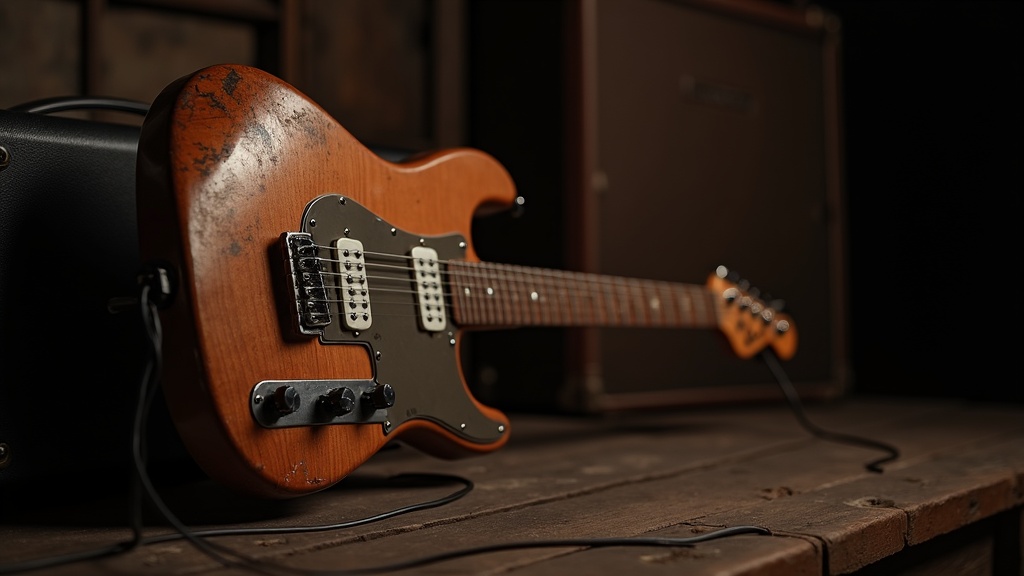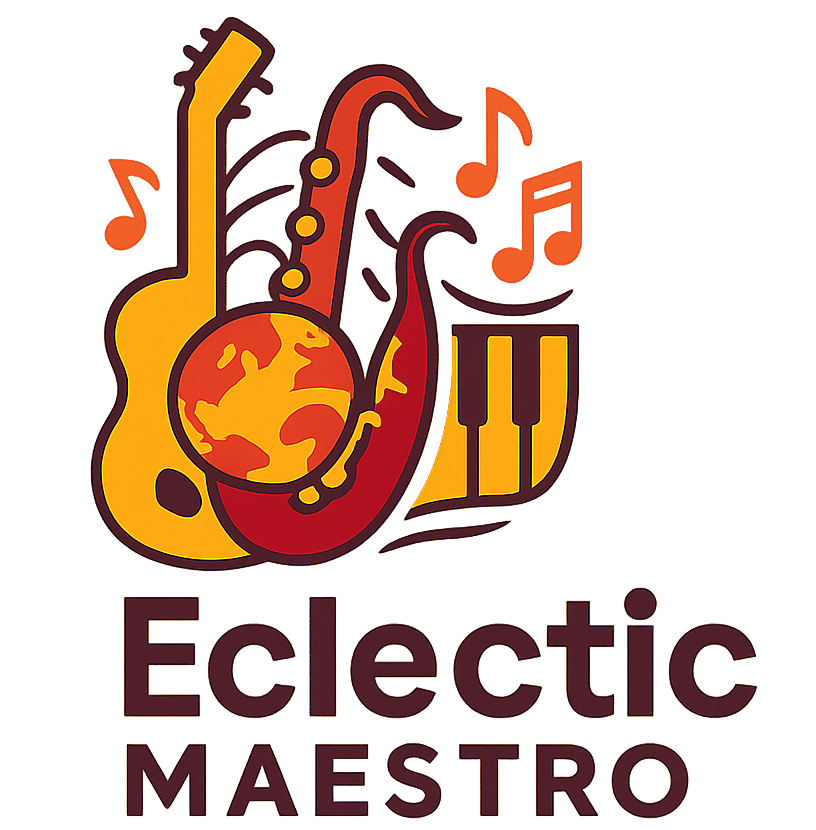Blues and rock are two music genres that have always felt closely related, but the story of how they blended into a powerhouse hybrid sound is pretty fascinating. If you’re into guitar riffs or foot-tapping rhythms, knowing how these styles changed and merged can shift how you listen. I’m going to break down the story of this crossover, covering its roots, the musicians who molded it, and why it’s still important today.

The Early Roots of Blues and Rock
The heart of this hybrid sound starts with the blues. Blues music grew out of the African American experience in the Deep South during the late 19th and early 20th centuries. There’s real honesty in the way blues musicians like Robert Johnson, Muddy Waters, and Bessie Smith pour emotion into every note. Blues uses a simple structure, especially 12-bar progressions, and often gives space for feeling over fancy technique. It typically starts with a singer and a guitar or harmonica, though pianos and drums come in as well.
Rock and roll kicked off in the 1950s, pulling straight from rhythm and blues. Artists like Chuck Berry and Little Richard took what the blues built and cranked up the energy, speed, and volume. It jumps out at me how early rock borrowed those signature “blue notes” and familiar themes like loneliness, heartache, and the urge to break free, but brought more drive. It’s almost as if blues plugged into an amplifier and lit up dance halls and airwaves in a fresh way.
How Blues and Rock Started Blending
The borders between blues and rock blurred in the late ‘50s and ‘60s. British musicians, in particular, caught the blues bug from American artists. You can trace much of the British Invasion to those bands spinning records by Howlin’ Wolf or Bo Diddley, then mixing in their own sensibilities.
The Rolling Stones, The Animals, and The Yardbirds deliberately covered blues songs or transformed traditional tracks with electric instruments. What came out was a heavier, grittier style that kept its blues base while adding the rocket fuel of rock beats and searing guitar solos. Eric Clapton’s outings with Cream or John Mayall’s Bluesbreakers are super helpful examples—they don’t just play the blues; they electrify it and give it new life.
- Electric Guitar Revolution: Plugging in amplified guitars gave musicians permission to really push limits. Blues scales plus feedback, distortion, and wah pedals invented a new kind of voice.
- Rhythm Switch: Blues is traditionally steady and slow, while rock adds quick, strong backbeats and louder drums for extra punch.
- Songwriting: Lyrics started to blend topics, pulling love and struggle from blues and mixing in youthful rebellion from rock.
Standout Albums and Artists
If you want to track down this hybrid sound, a handful of names always rise to the top. Jimi Hendrix balanced on the thin line between blues and rock, seamlessly mixing soulful bends with wild stage shows. Singers like Janis Joplin brought the heartbreak and intensity of blues to huge crowds, while Stevie Ray Vaughan channeled classic bluesmen, amplifying everything with rock’s power.
A few key albums and tracks capture this crossroads really well:
- The Rolling Stones – “Sticky Fingers” gives you “Can’t You Hear Me Knocking,” which melts bluesy licks right into driving rock riffs.
- Jimi Hendrix – “Are You Experienced” blows apart blues forms by using next-level cool psychedelic effects.
- Led Zeppelin – “Led Zeppelin I” features direct blues covers and original tracks based on blues scales and progressions.
- Stevie Ray Vaughan – “Texas Flood” brings Texas blues together with hard-rock edges for something altogether powerful.
Essential Musical Elements in BluesRock
BluesRock as a genre picks and mixes specific techniques from blues and rock. Most songs make use of the blues scale, which creates those familiar, slightly sad guitar solos. Twelve-bar blues song forms are common even in heavy rockers. One crucial feature is call and response: the guitar throws out a riff, the singer answers back. This tricks comes straight out of blues tradition.
The instrumentation is clearly a blend. You’ll often spot old-school harmonicas and walking bass lines from blues traditions, but you’ll also notice the crunch of distorted electric guitars, big drum kits, and sometimes organs or keyboards. The result is music that tells a rich story and at the same time sounds bold, rebellious, and intense.
- Simple Chord Progressions: Many of the most popular rock hits start with straightforward blues forms.
- Soulful Vocals and Guitar: Powerful emotional singing and expressive guitar work are must-haves for the style.
- Volume and Energy: Everything is just a bit louder, faster, and charged with attitude.
Challenges and Surprises in Hybrid BluesRock
Blending real, raw blues with the full-throttle energy of rock isn’t always simple. Some bands sound a bit too polished when a raw edge is part of the style. Others might rush the tempo but drop the emotional punch the music needs. One good approach: the best hybrid artists let each genre breathe by weaving slow-burning blues jams in with up-tempo rockers. This keeps the hybrid sound authentic and alive.
Plus, it’s easy for bluesRock to fall into familiar routines. New artists need to keep switching things up and pushing boundaries, not just echoing the classics. I’d suggest listening to lots of different artists, old and fresh, to keep inspiration sparking and styles evolving.
Gear and Sound
The tools musicians use play a big role in shaping the songs. Classic blues is usually played on semihollowbody electric guitars or resonator guitars, while rock pioneers lean toward solidbody electrics such as Fender Stratocasters and Gibson Les Pauls. Plugging into vintage tube amps, dialing up the reverb or overdrive, and trying out effects pedals can all help musicians craft a gritty, soulful tone. Even a budget amp can come alive when paired with some oldschool stompboxes.
Keeping the Sound Alive: Modern Blues Rock
Today’s bands, like The Black Keys, Gary Clark Jr., and Greta Van Fleet, are putting new spins on classic formulas. Tech advancements and digital platforms now let players mix in beats, samples, and electronic textures alongside timeless guitar grooves. Creativity is high, and young musicians show there’s plenty of space to mess around with boundaries, keeping blues Rock fresh and unexpected.
Blues Rock in Action: Real Life and Culture
What helps this sound stand apart is how it breaks into daily life outside concerts or recordings. BluesRock has influenced other genres left and right—country, punk, pop, even hip hop. You’ll run into bluesy licks inside modern pop songs, and stadium rock anthems often chase after the emotional rawness that first shaped blues decades ago.
- Live Performances: BluesRock bands are famous for focus on live concerts, sometimes building legacies with electrifying stage shows. The energy and sense of togetherness in real time matter as much as the studio tracks.
- Movie Soundtracks: The hybrid sound turns up in movies, TV series, and advertisements whenever a scene or commercial needs a vibe that’s cool and deep at the same time.
- Cultural Identity: In cities like Chicago, Memphis, and Austin, bluesRock thrives thanks to historic venues and regular festivals that always welcome fresh interpretations.
Frequently Asked Questions
What’s the difference between blues, rock, and bluesRock?
Answer: Blues focuses on simple, emotional melodies and subjects. Rock boosts the power through higher speed and volume. BluesRock brings both styles together by pairing blues forms and scales with electrified rock rhythms and bold stage presence.
Is it possible to start playing bluesRock without fancy gear?
Answer: For sure. Many iconic songs came from basic instruments—what matters most is how you play. Put your focus on the feeling, emotion, and experimenting with your sound, even using beginner equipment.
Who are a few key artists that shaped the hybrid sound?
Answer: Eric Clapton, ZZ Top, Stevie Ray Vaughan, Janis Joplin, The Rolling Stones, Led Zeppelin, and Jimi Hendrix all helped shape and push blues Rock to the next stage.
Why Blues Rock Still Draws Listeners
This blended style keeps sticking around because it always feels fresh. Every time someone slides their hand across a guitar or stamps to a pounding riff, blues Rock shows it can reach new ears every generation. It’s music that gives space for heartbreak and hope, wild spirit and thoughtful calm. Whether you’ve followed the scene for years or are barely getting into it, blues Rock has something for everyone who wants to feel connected—both to history and to right now.
